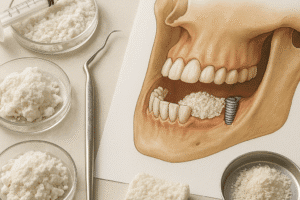Advances in Bone Regeneration Techniques
The field of bone regeneration has witnessed remarkable progress over the past decades, driven by interdisciplinary research in tissue engineering, materials science, and clinical medicine. This article explores the latest innovations that promise to overcome challenges in skeletal repair, focusing on novel biomaterials, cellular therapies, and translational approaches. By integrating advanced manufacturing, biological modulation, and personalized strategies, scientists and clinicians aim to restore structural integrity and functional performance in patients with critical-sized defects, non-unions, or degenerative bone diseases.
Innovative Biomaterials and Scaffolds
One cornerstone of modern approaches to bone healing is the design of tailored scaffolds that mimic the extracellular matrix, guiding osteogenesis and vascular ingrowth. Recent advances leverage additive manufacturing and nanotechnology to create architectures that balance mechanical strength with porosity, thus facilitating nutrient transport and cellular colonization.
3D Printing and Customized Implants
- Use of patient-specific digital models (CT/MRI data) for precise geometry.
- Biodegradable polymers (PLA, PCL) combined with ceramics (hydroxyapatite) to achieve desired biocompatibility and mechanical properties.
- Gradient porosity designs to optimize load distribution and tissue integration.
Nanoscale Modifications
- Surface functionalization with bioactive peptides or growth factors to enhance cell adhesion.
- Incorporation of nanohydroxyapatite and nanosilicates to mimic bone mineral phase and stimulate differentiation.
- Controlled release systems at the nanoscale for sequential delivery of osteoinductive cues.
Emerging research explores composite scaffolds enriched with magnetic nanoparticles enabling remote stimulation through external fields. Such dynamic systems allow non-invasive modulation of cellular activity and may accelerate bone formation while offering real-time diagnostic monitoring.
Cellular Therapies and Growth Factors
Beyond passive frameworks, active biological components play a critical role in orchestrating tissue regeneration. Strategies combining scaffolds with cellular and molecular cues have shown promising outcomes in preclinical and early clinical studies.
Mesenchymal Stem Cells and Progenitors
- Mesenchymal stem cells (MSCs) sourced from bone marrow, adipose tissue, and dental pulp demonstrate multipotency toward osteoblast lineages.
- Genetic engineering of MSCs to overexpress osteogenic transcription factors (e.g., RUNX2, BMP2) for heightened differentiation capacity.
- Co-culture techniques with endothelial cells to boost angiogenesis and improve graft survival.
Growth Factor Delivery
- Local release of BMP-2, VEGF, and PDGF using hydrogel carriers or microparticles.
- Sequential and spatially controlled release profiles to mimic natural bone healing phases.
- Minimization of adverse effects through low-dose, targeted delivery systems.
Advanced approaches harness exosomes derived from MSCs as cell-free therapeutics, carrying miRNAs and proteins that modulate inflammation, recruit endogenous progenitors, and stimulate matrix deposition. Such acellular strategies mitigate immune responses and simplify regulatory hurdles.
Clinical Applications and Future Directions
Translation of laboratory breakthroughs into routine clinical practice remains the ultimate goal. Several technologies have entered clinical trials, demonstrating safety and efficacy in challenging scenarios such as non-union fractures, spinal fusion, and large craniofacial defects.
Personalized Regenerative Medicine
- Integration of patient-specific risk factors (age, comorbidities) into treatment planning algorithms.
- 3D bioprinting of living constructs loaded with autologous cells for on-demand grafts.
- Use of digital twins and computational modeling to predict healing trajectories and optimize implant designs.
Regulatory and Ethical Considerations
- Harmonization of clinical trial protocols across regions to accelerate approval of advanced therapies.
- Standardization of potency assays for cellular and acellular products.
- Addressing long-term safety, especially regarding oncogenic risks in genetically modified cells.
Looking ahead, combination therapies integrating regenerative medicine with immunomodulation and smart biomaterials are poised to redefine standards of care. Artificial intelligence and machine learning will further streamline scaffold design, cell selection, and treatment personalization. As multidisciplinary collaborations intensify, the vision of fully functional, patient-tailored bone implants moves ever closer to reality, offering hope for millions suffering from skeletal disorders.













